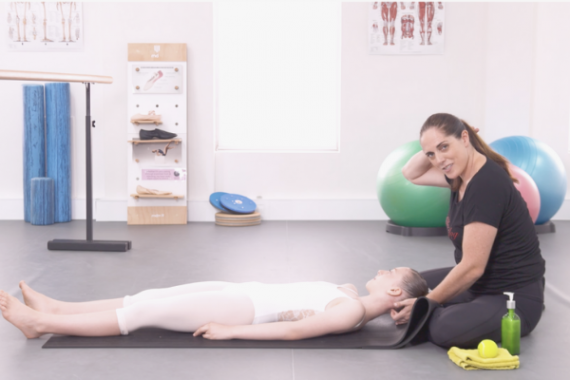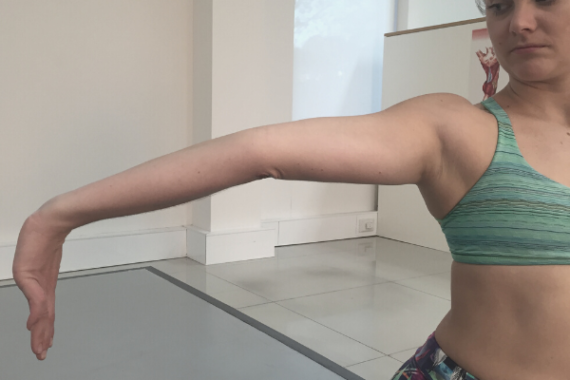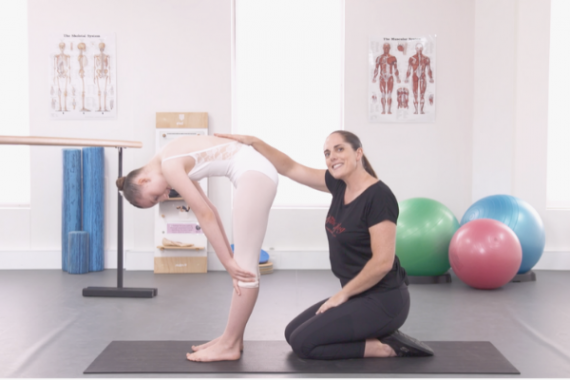- Free Articles
- Shop
- Workshops
- The Dance Educator Series
- L1 – The Fundamentals
- L2 – Pointe Intensive
- L2 – Flexibility Intensive
- L2 – Training Turnout in Tiny Dancers
- L3 – Foot & Ankle Injuries in Dancers – NEW
- L3 – Hip Injuries in Dancers
- L3 – How to Train Extreme Mobility Safely
- Upcoming Workshops
- Workshop FAQ’s
- Workshop Testimonials
- Host Application Form
- Dance Teacher & Health Professional Directory
- Members Areas
- Cart
- My Account
How to get your Legs Higher in a Développé
So many dancers have great flexibility when stretching, but find it hard to use this when dancing, especially with getting legs higher in a développé. If you simply practice the step over and over, often the result is bulky thighs and tight hips, with not a lot of increase in range. This will happen if you are trying to use the front of the leg to lift, rather than controlling the leg from the hip.
Exceptional control of the leg en l'air is only possible when there is excellent segmental stability in the deep lower back, coordinated activation of just the right amount of muscle at just the right time in the hip of the gesture leg and good endurance and control of standing leg turnout as explained in this video.
Our 'How to get your legs higher in a développé devant' goes through all of these elements in detail to give you a customised program based on your own anatomy and current level of control.
This exercise is also fantastic to practice if you have a serious foot injury and are not able to stand in class or put load through the foot. You can even do this if you are not able to point the ankle, by keeping your ankle flexed throughout. This means that you can continue to strengthen your body and improve your technique, even when "not dancing" due to injury. To work out all the true muscles needed to work the leg devant, lie on your back, with your legs out straight and your hands on your hips.
- Slowly peel the foot up into a retire position (feel your inner thighs working!)
- Make sure to keep the foot flexed if you have any issues at the back of the ankle (i.e. Achilles Tendinopathy or Os Trigonum Pain)
- Make sure that the hips stay square, and don't hitch or twist!
- Slowly unfold the leg as for a développé devant at 90 degrees working on controlling the turnout from the hip, and lengthening the leg.
- Focus on not cheating height by tucking the pelvis in this position, but focus instead on correct placement of the leg
- Slowly rotate the working leg in and out in order to master control of the hip in the socket
- Slowly lower the leg back to the floor, making sure you use your abdominals so that your back doesn't arch!
- Repeat just a couple of times on each leg
- Watch the video below for the three variations of this exercise
If you can control the leg and pelvis well with a développé to 90 degrees (or above) without moving the hips, you will be able to achieve a much greater height of leg when you let the pelvis become involved (it has to begin to shift a little above this). However, if you are hitching and struggling to get to 90 degrees, you will find it very hard to improve beyond this point unless you really focus on your stability!
If you practice your développé in this position, your muscles will learn how to control the leg much easier, and you will find that your range improves quite quickly! Then, when you practice standing, everything feels a lot more familiar!
For more exercises to help improve your adage, please check out our 'How to get your leg higher in a développé devant' program. This covers all the assessment techniques, fine retraining, and functional conditioning that you need for effortless extensions.
Turnout Resources
If you are looking to delve deeper into this topic, check out the following programs:
- Tips for Turnout: This ‘Tips for Turnout Guide’ is a great starting point for anyone wanting to learn more about how to maximise turnout safely, and is the first resource in our Training Turnout Series. It gives you tips on improving your range, developing control of your standing leg and specific ways to increase the height of your développé devant.
- Training Turnout: Deepen your exploration of the anatomy of the dancers’ hip with this unique Training Turnout eBook. As the second resource in our Training Turnout series this program is a great follow on from our Tips for Turnout Program. Learn how to assess and understand the structure of your own hips, strengthen standing leg turnout and turnout en fondu as well as develop extraordinary control in your adage.
- Training Turnout in Tiny Dancers: If you are a dance teacher, this is the perfect continued education course for you. In this systematic and comprehensive approach to training turnout in tiny dancers, Lisa and Beverly provide dance teachers with direct techniques to use in class to safely develop optimal range and control of motion in all dance students. This program begins by establishing strength and control in parallel, before adding on the control of rotation, which is hugely important in the long term health of dancers’ hips. Using elements of fun and creative play to bring scientific and detailed training programs into dance schools is a unique and effective way to help thousands of young students worldwide.
- Anatomy Posters: These A3 posters are a great addition to the studio, to make it easy for teachers to explain the anatomy behind the movement to dance students. With clear anatomical images and descriptions of how each muscle works in a dancer, they are an essential tool for training intelligent dancers.








